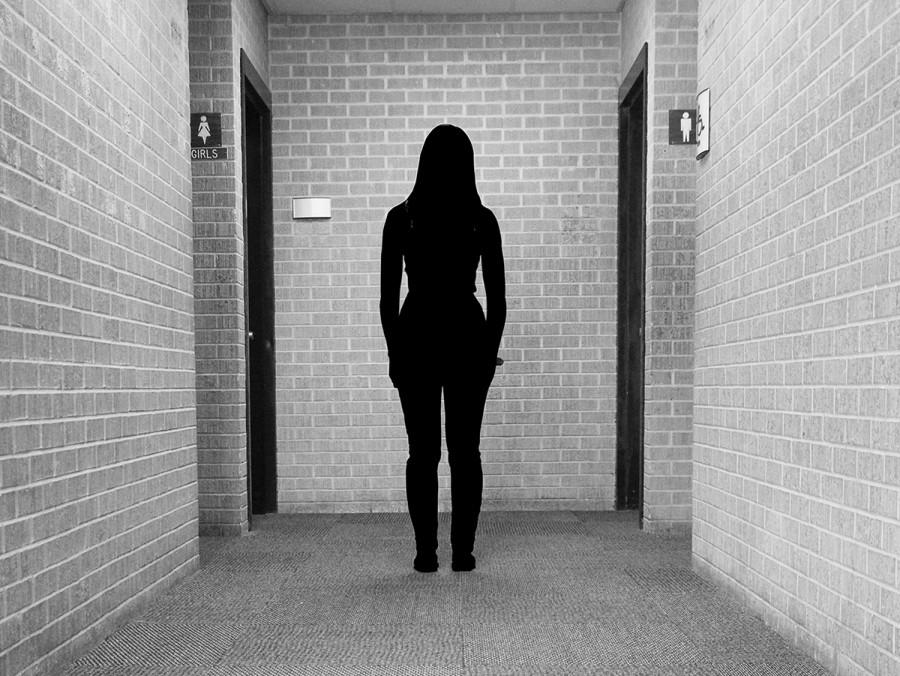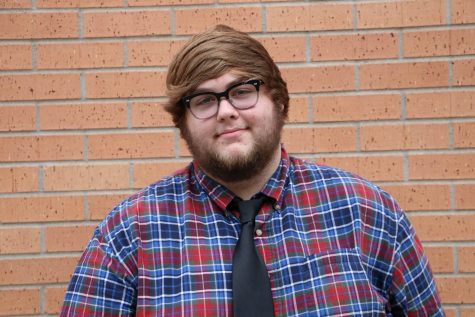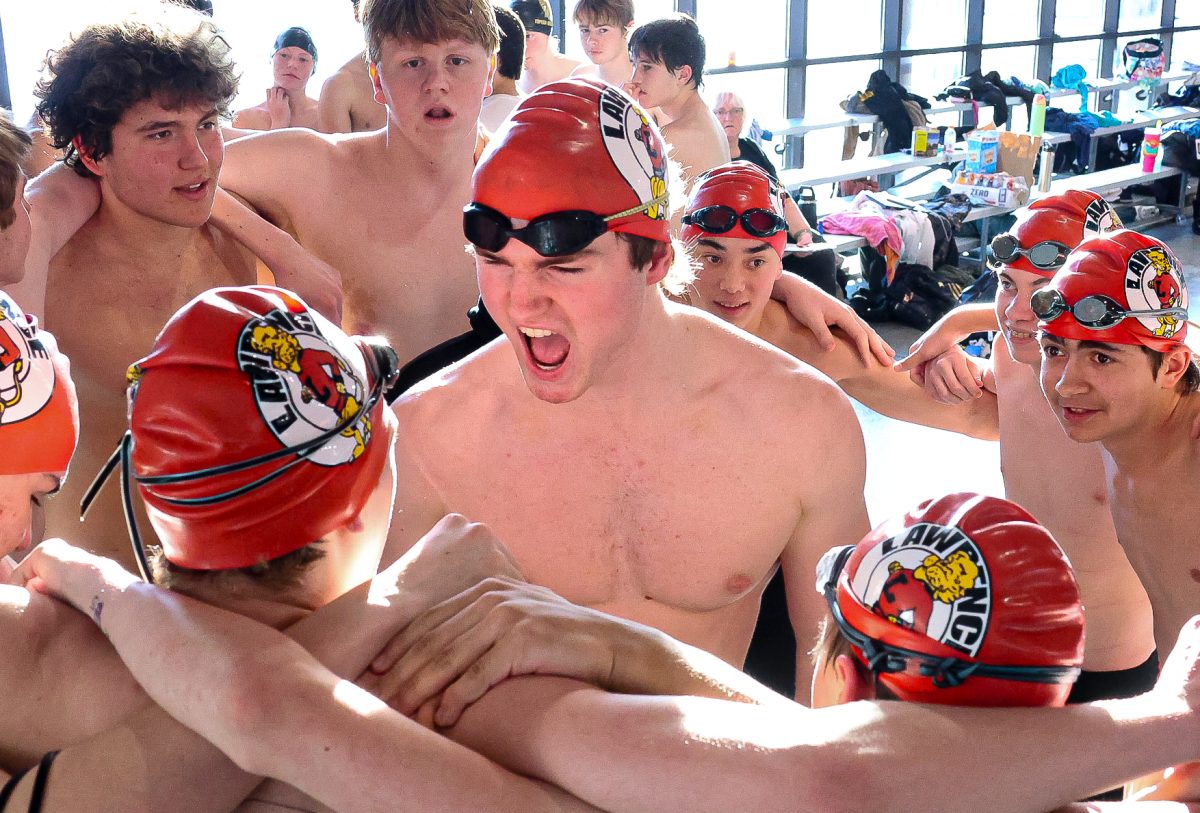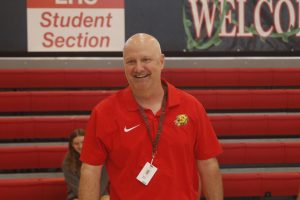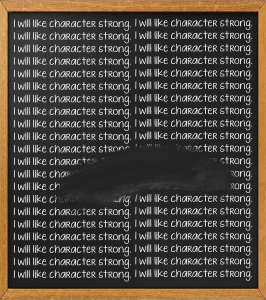District working to meet needs of LGBT students
Challenges — Many transgender students find difficulty in navigating daily tasks because of marginalization. The district is working to adress their challenges by providing gender-neutral bathrooms.
October 22, 2015
A rainbow-clad White House and pride parades in major cities across the nation signaled a landmark win in the decades-long fight for Constitutional rights. The 5 to 4 Supreme Court decision announced on June 27 changed the way the American government treats the Lesbian, Gay, Bisexual and Transgender community.
But for many, the fight isn’t over.
Particularly for transgender people, who do not identify as their gender assigned at birth, navigating daily life can be a pain. From lack of options for bathrooms to mistreatment by their peers, transgender people are, in many ways, at a disadvantage.
The disparity, however, hasn’t gone unnoticed. With input from teachers across the district, the school board has recently made accommodating LGBT students — particularly transgender students — one of its goals this year.
“With the district recently getting on board with this, a lot of it is just educating and knowing what the needs are of the transgender students,” Gay-Straight Alliance co-sponsor Randall Frye said. “What we can do with what we have now and what we can work toward to become more equal and inclusive.”
To identify issues and brainstorm their solutions, a district work group has began meeting to consider the needs of all students.
At their first meeting on Sept. 8, they brainstormed a list of areas to focus on, including:
Bathrooms
For students who are transgender or do not identify as their assigned gender, having to use a gender-specific bathroom can make their time at school more difficult.
To accommodate these students, the district will look to establish gender-neutral bathrooms in each school. This could be incorporated into construction at the elementary school level, as it was with construction at Cordley. At the high schools, some action has already been taken.
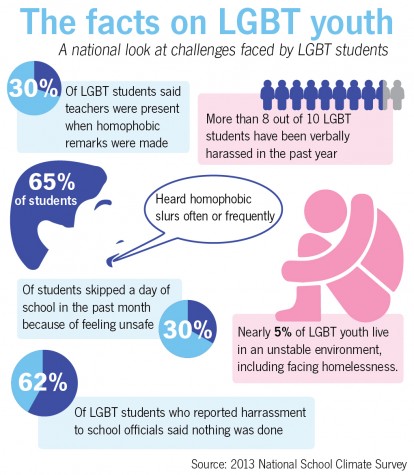 Two gender-neutral bathrooms have been established in the LHS main building this year.
Two gender-neutral bathrooms have been established in the LHS main building this year.
“I think they do a good job with it, especially in the annex there are a lot of gender neutral bathrooms,” said senior Jai Strecker, who is transgender. “It can be difficult sometimes in the main building because there are only two for 1,000 kids.”
Locations of the bathrooms are only disclosed to students who request access so they are not outed to the people who see them enter. Students who feel uncomfortable using the gender-specific bathrooms can learn about the locations from the GSA sponsors.
Although this is done for the security of students, some think the information should be made more accessible.
“I think it should be more open,” Strecker said. “I think they should let more people know that we have gender-neutral bathrooms.”
Establishing more gender-neutral bathrooms is a step toward district goals, although the work group also identified locker rooms as a possible issue for transgender students. The lack of private changing stations could hinder LGBT students from participating in physical education classes and sports, the work group said.
Sex Education
Until last year, sex education provided in ninth grade health classes only covered heterosexual, cisgender topics. However, since the district adopted a set of national standards, lessons are more comprehensive of different sexualities and gender identities.
The new standards established by the Future of Sex Education initiative gives specific definitions within the gender and sexuality spectrum, including for “biological sex” and “gender” as well as defining “heterosexual,” “homosexual” and “transgender.”
The standards also addresses dating and sexual violence as well as bullying and its impacts on physical and emotional health.
“I think it would be incredibly helpful that the education they are receiving is inclusive of who they are,” Sanburn said.
As well as being a school board member, Sanburn is a nurse and teaches sex education to health classes. During the unit, she comes to LHS with nurse Cori Green and said students have generally been receptive to learning about topics beyond the conventional gender binaries.
“I think young people have grown up in a world that is a little less black and white when it comes to issues about gender and sexual orientation, so it’s less of a shock really that there are more categories and not everyone fits into a box,” she said.
Bullying
Strecker said he feels safe at LHS, although some situations can be stressful.
“The only time I ever feel uncomfortable is if people don’t know I’m trans, and they are talking about trans issues and they are being close-minded and unsupportive,” he said. “I usually don’t want to start anything, and I just sit there. But it still doesn’t feel great.
In some communities, LGBT students can face severe discrimination and harassment. One-half to two-thirds of LGBT-identifying students reported verbal abuse at school and half of those students reported physical harassment according to a 2013 survey conducted by Gay, Lesbian and Straight Education Network.
Many transgender students, because of their fear of bullying, choose not to come out in high school.
“It’s absolutely horrifying [not being able to come out,]” GSA president junior Tatyana Younger said. “Because so many kids in this school feel OK to be themselves and that’s amazing. And some of the best people I know can’t be themselves in this school because they fear what people might do to them or say to them.”
With this in mind, the district has specified LGBT issues in its official discrimination and harassment policies.
School districts are legally-obligated to have anti-discrimination policies, but LGBT students are often not identified as a protected group under them. USD 497, however, specifies sexual orientation and gender identity among protected groups that also include race, religion and age.
“Our board does a good job of setting that legal language for harassment that is not allowed,” Sanburn said.
Mental health
High school can be a difficult time for many students in terms of mental health. But for students who recognize themselves on the LGBT spectrum — particularly those who have faced discrimination or bullying — adolescence can be even harder to cope with.
A nationally representative study of adolescents in grades 7–12 conducted by the Centers for Disease Control and Prevention found that lesbian, gay and bisexual youth were more than twice as likely to have attempted suicide as their heterosexual peers.
It’s no surprise that these students often struggle to keep up academically. LGBT students are more likely to miss school than their peers, which can lead to lower GPAs and lower rates of post-secondary education according to the 2013 survey.
The district looks to address mental health largely through staff training and development. Before school started, 30 USD 497 staff members attended a suicide prevention workshop. Although diversity was highlighted, LGBT-specific training wasn’t addressed. The work group would like to change that.
The group suggested the district partner with Bert Nash Community Mental Health Center to train staff to better accommodate mental health issues common to LGBT teens.
Peer education and advocacy
Along with implementing a more inclusive sex education curriculum, the district will encourage schools to better educate their student bodies on LGBT issues.
“Specifically at LHS there has been a lot of work by students to inform other students about the variety of gender expression that exists and identity and sexual orientation,” Sanburn said. “I think it’s really great the level of engagement in your guys’ school community.”
The district will look to utilize the GSAs in each school to inform student bodies about LGBT issues with the intention it will create a more supportive peer environment.
When LHS started its GSA in 2004, it was the first district school to do so. Free State soon followed, and now each of the middle schools has one.
According to the 2013 National School Climate Survey, LGBT students who attend schools with GSAs are less likely to hear homophobic or transphobic slurs on a regular basis. When they do hear them, they are more likely to report bullying behavior, and they are less likely to feel unsafe at school overall.
“Its super exciting that they’re [the district is] making strides and making sure that everyone feels comfortable at their schools,” Younger said. “With all the GSAs at every middle school and both high schools, not only will students feel more accepted by their teachers but… their student bodies will also be more knowledgeable about their issues.”
The returning president has made a point of emphasizing issues of people across the LGBT spectrum. The club will discuss a variety of topics over the course of the year, including transgender issues, which Younger said club members have expressed interest in learning about.
“[We have] been focusing more on the B and T of LGBT, so bisexual and trans and the plus, so everyone else,” she said. “Because a lot of the times GSAs meet, they talk a lot about the LG part, and I thought it would be cool to be more inclusive.”
As well as educating themselves about these issues, the GSA organizes outreach events such as Pride week to inform the student body.
“You can offend someone and not even realize you’re offending them,” Frye said. “The vocabulary is so new to a lot of people.”
During Pride week last year, club members went on the announcements to discuss different parts of the LGBT spectrum. This year, Younger will look to expand these effort by recognizing additional days, weeks and months of awareness for different identities.
By informing the student body, the GSA hopes a greater understanding of LGBT issues will promote acceptance and proper treatment of their classmates.
“We’re really moving in a good direction,” Frye said.



